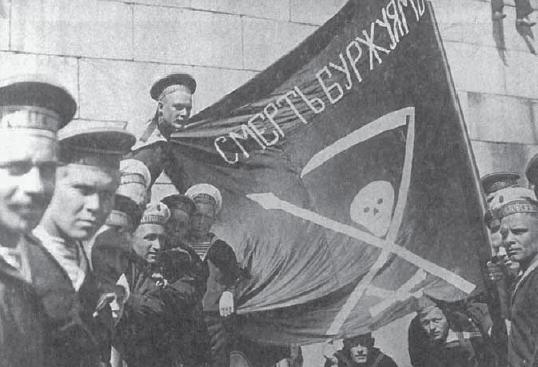At the most recent general meeting of the Free University of NYC (last Sunday), some expressed the need to contextualize our movement within a larger history of free education movements in the United States and around the world.
Perhaps this blog is as good a place as any to start such a conversation. What can we learn from history? What are particularly meaningful, inspiring, or problematic models in the history of free education?

Recently I happened to pick up a free copy of an old book, a hand-me-down from a professor on my campus. The book is titled, The Anarchists in the Russian Revolution, edited by Paul Avrich, published in 1973. The book is a collection of primary documents produced by Russian anarchists during the years 1917 through 1921. The narrative arch of the book begins with the initial optimism of the anarchist movement within Russia (and in the United States, too; think, Emma Goldman and Alexander Berkman) when revolution first broke out in 1917. The book concludes with the tragic demise of the anarchist wing of the revolution by the year 1921, stamped out as they were by the Bolsheviks who favored state socialism over anarchism and ultimately arrested hundreds (and killed scores) of anarchists.
But in those turbulent four years from 1917 to 1921, Russian anarchists attempted (and sometimes even briefly succeeded) to develop communes in which workers and peasants reciprocally cared for one another’s needs through mutual aid, without the interference of either the “dictatorship of the bourgeoisie” (the capitalist class) or the “dictatorship of the proletariat” (a dictatorship, in reality, of “administrators and party committees” as anarchists pointed out). Under Lenin, single-party rule and state socialism were promoted, while the genuine, democratic aspirations of “workers’ control,” promoted by the anarchists, were repressed by the new state.
In the realm of education, apparently some Russian anarchists sought to establish “free universities.” According to primary documents found in the aforementioned book, the anarchists’ free universities were to embody the following characteristics. They would promote:
-integrated education (both mental and manual skills)
-and experiential education (to learn by doing, not just reading)
And here’s more from the Theses on the Cultural Organization of Russia, a product of the Second All-Russian Conference of Anarcho-Syndicalists, 1919 (excerpted with many ellipses…just to give a brief idea of the content of the larger text):
“A. To awaken interest among the proletarian masses in art, learning and cultural pursuits.
B. To seek ways and means of developing the initiative and creativity of the masses. … It will also make it possible for the proletariat to create its own socialist—as opposed to bourgeois—culture and its own art…
C. To encourage in every way possible the development of the individual personality, with all its disparate features, eliminating prejudices and pre-conceived ideas while seeking to present facts which will help the individual formulate his own opinions about things.
… E. To apply every means to inculcate in the proletarian masses the habit of thinking independently…
F. To help the workers teach themselves self-respect and to know how to make others respect them, not only without laws but in spite of them and in spite of ‘the world of power’ around us.
G. … to nurture among the workers the spirit of revolt and to make of them conscious, loyal, tireless and fearless fighters in the true spirit of relentless class struggle for a shining future, for anarchism.
… I. …organizing truly proletarian institutions—universities, theaters, libraries, reading rooms, schools of different types, proletarian palaces, museums, conservatories, etc.
… K. To encourage the development of the above-mentioned institutions, by means of which the proletariat must wrest from the arms of the state and church the entire function of education and learning and take it in its own hands.”
And there is more. But I stop there. “Proletarian palaces?” This is perhaps the part that intrigues me the most: the establishment of democratic, horizontal, collective cultural and intellectual institutions free of state control.
2013 is not 1919, and NYC is not Petrograd. We must remember that historic events like the Russian Revolution occurred within a wild brew of contexts and contingencies. What the “free university” was to anarchists of the Russian Revolution cannot be what we create for New York City in the twenty-first century. But knowing the past, and then deciding what to do (or not to do) with it, is a much better position than not knowing the history at all.
So what do you think we can learn from the history of free education movements? Anything? Nothing? Do you suppose that free universities and free schools were established during other revolutionary periods in history? What about in our modern-day revolutions, as in the Arab Spring? Any examples of free universities that we can learn from?
Please share your knowledge with us. Tag us at #FreeU or @FreeUnivNYC, or leave a comment below.
[The views expressed in this blog are sometimes those of individuals and sometimes that of the collective. Today’s post reflects the views solely of the author listed above.]
Comments by Gregory Rosenthal